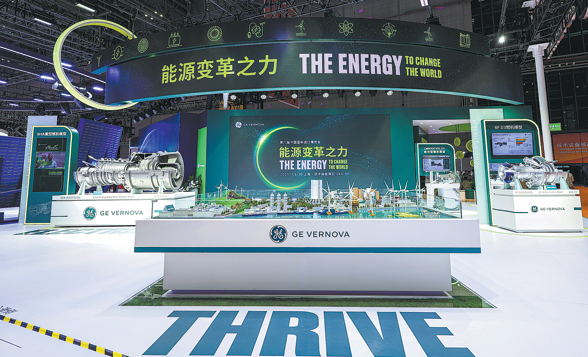China key hydrogen market, says GE Vernova


GE Vernova views China as a crucial market for commercializing hydrogen power, with the company's top executives pointing to the nation's unique capacity to scale up new energy technologies and its ambitious carbon neutrality goals as the primary drivers.
The US-based energy company is positioning its advanced gas turbine fleet to integrate seamlessly with China's massive buildout of intermittent wind and solar resources, proposing hydrogen as the key solution for long-term storage and grid stability.
"If there is a place in the world where hydrogen will become a reality, it is China," said Ramesh Singaram, GE Vernova president and CEO for Gas Power Asia.
Singaram said that China has already proven its ability to rapidly scale up the energy transition, a necessary prerequisite for transforming hydrogen — historically treated as a chemical commodity — into an affordable, sustainable and secure energy source for the power sector.
GE Vernova's strategy centers on pairing hydrogen-fueled turbines with renewable energy bases across the country. The goal is to maximize the efficient and sustainable use of hydrogen fuel across various application scenarios.
The company's turbine portfolio offers significant hydrogen-blending flexibility.
GE Vernova's HA-class gas turbines currently offer up to 50 percent hydrogen blending capability, while its smaller, aeroderivative LM6000 VELOX units are capable of firing on 100 percent hydrogen, providing immediate options for power producers looking to rapidly decarbonize.
China cemented its global dominance in hydrogen development last year, with total hydrogen production and consumption exceeding 36.5 million metric tons, securing its position as the world leader in the sector, according to the National Energy Administration.
China boasts over 560 hydrogen fueling stations and the world's largest fleet of fuel cell commercial vehicles, exceeding 25,000 units, said Liu Deshun, director-general of the NEA's science and technology department.
Capacity for renewable energy-based hydrogen production now accounts for over 50 percent of the global total, underscoring its significant role in the clean hydrogen transition, he said.
Xu Xin, chairman of GE Energy Investment (China) Co Ltd, emphasized the pivotal role of green hydrogen in maintaining grid stability amid the surging volume of renewables.
Xu expressed confidence that China is on the verge of a "curve-overtaking" moment, solving the critical challenges of green hydrogen's affordability and availability that have plagued its adoption elsewhere.
"The high volatility of renewable energy often leads to surplus power when supply exceeds real-time demand," he said.
"By utilizing power that would otherwise be curtailed or wasted to produce hydrogen, which can be stored long-term, we have an identical solution to an energy storage system when the grid needs power."
"I dare not say this about other countries, but I believe it is possible in China," he said.
Data released by the NEA reveal that by the end of 2024, the nation's annual hydrogen production capacity had surpassed 50 million tons, with total output exceeding 36.5 million tons, cementing its status as both the largest producer and consumer of hydrogen globally.
The deployment of large-scale renewable energy-based hydrogen production projects is also gaining momentum, particularly in resource-rich regions such as the northwestern, northern and northeastern parts of the country.
According to Xu, in China's expansive northwestern regions, where low-cost onshore wind and solar power generation is abundant, that energy could be leveraged to produce green hydrogen, which in turn functions as a mechanism for long-duration energy storage.
The stored green hydrogen would then fuel gas turbines, creating a reliable "wind-solar-hydrogen-gas" generation system to stabilize power output and ensure base-load power, he said.
In contrast, densely populated coastal economic hubs would utilize green hydrogen produced from offshore wind, powering gas turbines in load centers, strategically replacing older coal-fired capacity for decarbonization while providing essential frequency and voltage support to the grid, he added.
Evidence of this commercial strategy is already visible in Guangdong province.
Guangdong Huizhou Combined Heat and Power (CHP) plant began commercial operation last year, and successfully completed hydrogen blending commissioning in May. It is the first hydrogen-blended natural gas facility equipped with GE Vernova's 9HA gas turbines in China, said Xu.
zhengxin@chinadaily.com.cn




































